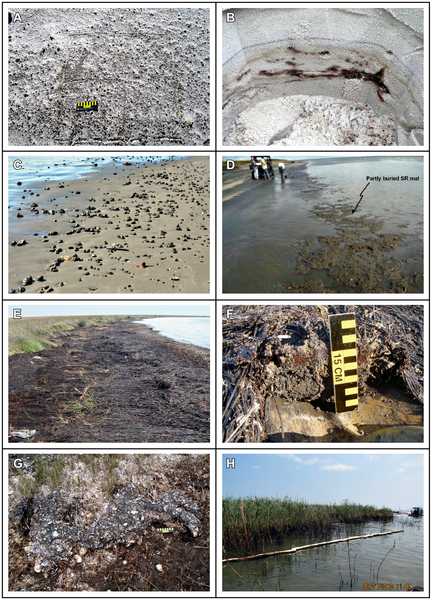In recent years, with the development of marine transportation, the continuous occurrence of oil spills at sea has aroused wide concern. About 10 million tons of oil spill into the world’s oceans every year. The occurrence of offshore oil spill not only causes huge waste of resources and economic loss, but also destroys the marine environment directly.
The maximum oil spilling in the history is Mexico bay oil spilling event (from 20th April 2010 to 15th July). Even more than a decade has passed, the damage still existed.
The shoreline evaluation team records: Oil from the Deepwater Horizon spill in the Gulf of Mexico in 2010 was stranded on 1,773 kilometers of shoreline. The 50.8% of oil-immersed shoreline is beach, 44.9% is marsh, 4.3% are other types. Shoreline cleaning activities authority is in 600KM (which is 73.3% of the oil-immersed beach) and 71KM( Which is 8.9% of oil-immersed swamp and related habitat). One year after the spill began, oil remains at 847 kilometers away from the spill location.

The shoreline blackened by the Gulf of Mexico oil spill
Colin O ‘Mara, president and CEO of the National Wildlife Federation, said in a statement this week, “More than three-quarters of pregnant bottlenose dolphins in the oil region failed to give birth to a single live calf. It is estimated that between two trillion and five trillion juvenile fish and 8.3 billion oysters have already disappeared, with a significant impact on the region’s fisheries.”

Atlantic coast and the Mediterranean Sea, the Pacific coast, many places have been severely polluted by the oil spill at sea. The shoreline has “blackened”. In order to meet the demand of the Marine habitat, the International Maritime Organization (IMO) Mediterranean Marine pollution emergency center is clearing the specific location, and also setting up a volunteer organization to carry out on the shoreline of oil spill cleanup.

The pictures are from《OILED SHORELINE CLEANUP MANUAL》
Due to the fractal nature and the rapid change of the shoreline, as well as the characteristics of crude oil itself, the cleaning work is very difficult. The transportation and storage are quite complex. The oil sludge treatment has been a big problem.
At present, the oil spill pollutants (oily sludge with complex composition) in the European shoreline are generally disposed by landfill, biodegradation and extraction, so as to realize the reduction and harmless disposal of the oil spill.
Oily sludge is a dangerous waste, meanwhile it also contains a large amount of crude oil resources. In the process of disposal, we should not only consider harmless treatment, but also realize full resource utilization.

Oil sludge pyrolysis technology from China
After years of development and practice, the “industrial continuous oily hazardous waste pyrolysis production line” independently developed by Niutech Environment Technology Corporation can process various types of oil sludge (HW08 category), such as oilfield sludge, refinery sludge, tank bottom sludge, oil-based drilling cuttings, oil-contaminated waste, ground sludge, shoreline oily sludge; after treatment, pyrolysis oil and clean soil are obtained. The oil content of the post-processed soil is less than 0.3%, even down to 0.05% if necessary.
For shoreline oil pollutants, the production line does not need to screen the stones, plastic pollutants, biomass and organic matter, but can directly feed for treatment, which truly realizes the reduction, harmless disposal and resource utilization of oil sludge.
Let the “blackened” shoreline turn back, return the world a clean sea and blue sky!
For video introduction about this news, click here→
Email:sales@niutech.com
Tel:86 531 86196301
